The Importance of E-commerce Website Design in the Digital Age
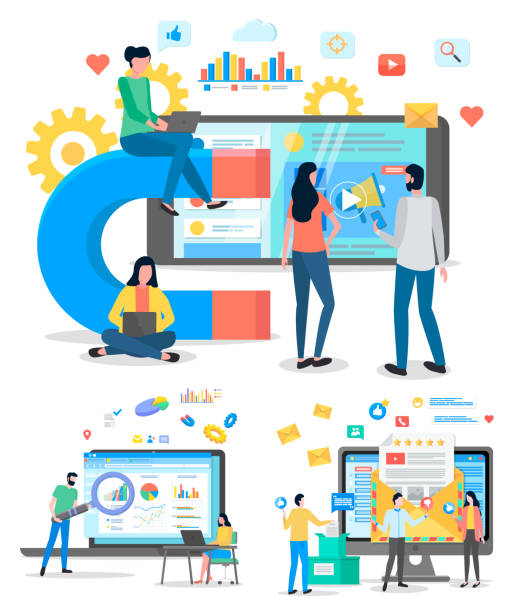
In today’s world, where information and communication technology is advancing at an unprecedented pace, having a strong online presence has become more vital than ever for any business.
E-commerce website design is no longer a luxury option but a necessity for survival and growth in competitive markets.
These platforms enable businesses to offer their products and services to potential customers beyond geographical limitations.
The concept of #e-commerce is no longer just about buying and selling goods; it encompasses a comprehensive experience of discovery, selection, purchase, and receipt of goods, in which #online_marketing and #global_access play key roles.
With a powerful e-commerce website, you can not only attract more customers but also increase their loyalty by providing better services and personalizing the shopping experience.
This paradigm shift has provided countless opportunities for entrepreneurs and small and large businesses to reach wider markets and significantly increase their profitability by investing appropriately in their website design.
This is an analytical and explanatory step to understanding the current position of e-commerce.
Did you know that customers’ first impression of your company is your website? Multiply your business’s credibility with a powerful corporate website from Rasawb!
✅ Custom and eye-catching design tailored to your brand
✅ Improved user experience and increased customer attraction
⚡ Get a free consultation!
Initial Steps Before Starting E-commerce Website Design
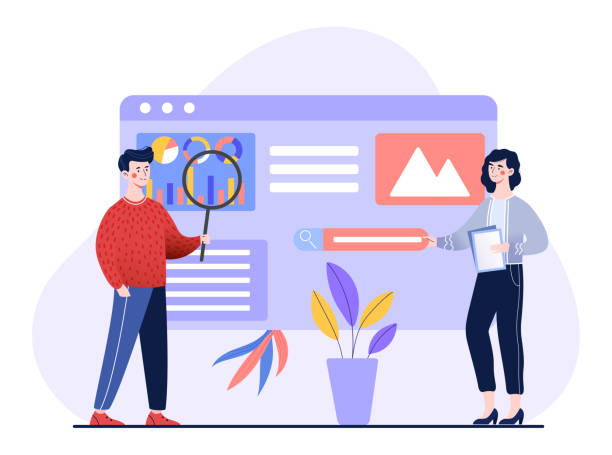
Before any practical action for e-commerce website design, it is essential to have precise and comprehensive planning.
This guidance and educational stage is of high importance as it lays the foundation for your future success.
First, you need to conduct thorough market research to identify the needs of your target customers and analyze your competitors.
What products will you offer? Is there sufficient demand for them? What is your competitive advantage? Accurately defining products and services, as well as understanding your target audience (in terms of age, gender, interests, and purchasing power), are fundamental steps.
Your business model – B2B, B2C, or C2C – and also how goods are sourced and shipping logistics should be determined in advance.
Choosing an appropriate domain name and reliable hosting are two other crucial decisions that directly impact your website’s speed, security, and credibility.
Precise planning prevents waste of time and resources in the future and helps you move towards building your online store with a clearer vision.
Common Platforms and Tools for E-commerce Website Design
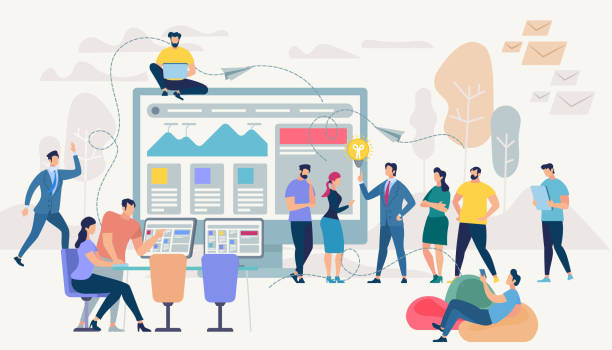
Choosing the right platform is one of the most important decisions in e-commerce website design.
This specialized and explanatory stage requires knowledge of the available options and their careful comparison.
There are various platforms for creating an online business website, each with its own advantages and disadvantages.
Among the most popular are WooCommerce, which is a plugin for WordPress; Shopify, which is a SaaS (Software as a Service) platform; and Magento, for large and complex stores.
The choice between these platforms depends on your budget, technical knowledge, required scalability, and the specific features you expect from your store.
Some require programming knowledge, while others offer no-code design with an intuitive visual interface.
Below is a brief comparison of the key features of some of these platforms to help you make the best choice for your e-commerce website design needs.
| Feature | WooCommerce | Shopify | Magento |
|---|---|---|---|
| Cost | Free (requires host and domain) | Monthly subscription (includes hosting) | Free (open-source version) / Expensive (enterprise version) |
| Ease of Use | Medium (requires WordPress) | High (user-friendly) | Low (requires technical knowledge) |
| Scalability | Medium to High | High | Very High |
| Flexibility | High (with plugins) | Medium (with add-ons) | Very High (open-source) |
| Support | Community and Developers | 24/7 via Shopify | Community / Paid Support |
Principles of User Experience (UX) and User Interface (UI) in E-commerce Website Design
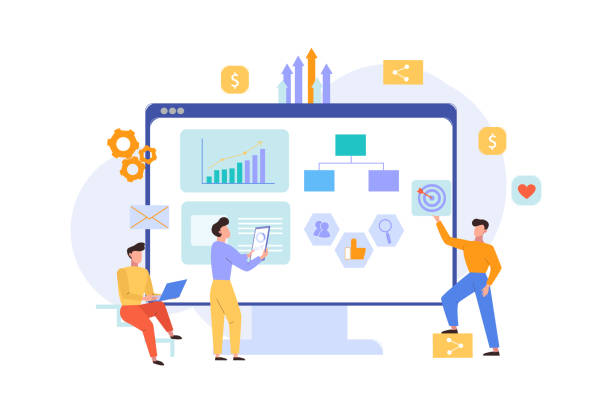
User Experience (UX) and User Interface (UI) are two main pillars in the success of an e-commerce website.
The importance of these two concepts in e-commerce website design is such that it can make the difference between a successful online store and a failed one.
A specialized design should focus on creating an easy, enjoyable, and frictionless shopping experience for the user.
This includes intuitive navigation, responsive design for correct display on all devices (mobile, tablet, desktop), high loading speed, and clear and attractive Call-to-Action buttons.
High-quality product images, complete and accurate descriptions, and advanced filtering and search capabilities help users quickly find their desired product.
UI design should also be visually appealing, use appropriate colors and fonts, and have a neat and beautiful layout.
A store with strong UX/UI will not only have higher conversion rates but will also significantly contribute to increased customer satisfaction and their return.
This aspect of web design is crucial.
Did you know that 85% of customers check your company’s website before any interaction?
With Rasawb, build a corporate website worthy of your credibility.
✅ Increase credibility and customer trust
✅ Attract high-quality leads
⚡ Get a free website design consultation now!
Search Engine Optimization (SEO) for E-commerce Websites
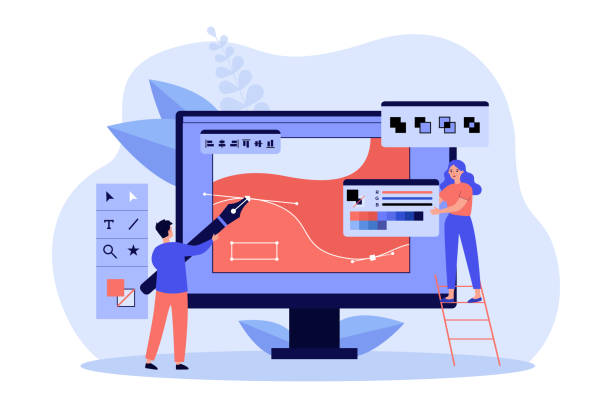
After completing e-commerce website design, the most important next step is to ensure its visibility.
Search Engine Optimization (SEO) plays a vital role in attracting organic traffic and increasing sales.
This section of the article is educational and specialized.
For successful SEO in an online store, you should focus on keyword research, product page optimization, using structured data (Schema Markup), and creating high-quality content.
Keywords related to products and categories should be used in titles, descriptions, and image ALT text.
Product descriptions should be unique and persuasive, and plagiarism should be avoided.
Website loading speed, mobile compatibility, and having a valid SSL certificate are also important Google ranking factors.
Creating blog content related to your products and industry can also help attract traffic and increase site authority.
Internal and external link building is another important part of the SEO strategy that helps increase domain authority and improve rankings.
Secure Payment Gateways and Financial Management in Online Stores
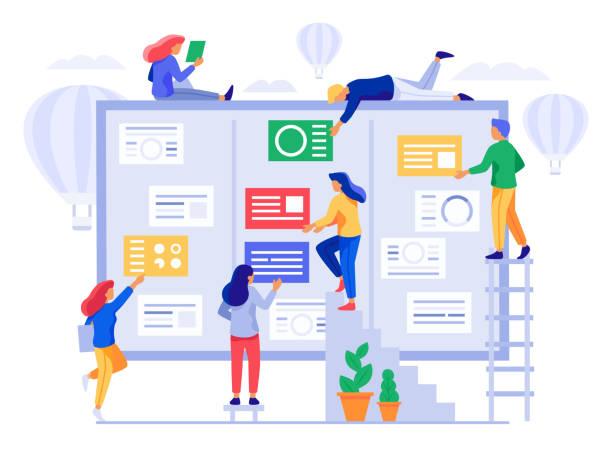
Secure payment gateways and transparent financial management are fundamental pillars for the success of any e-commerce website.
Customer trust in your ability to protect their financial information directly impacts their conversion rates and loyalty.
This specialized and guidance section addresses the importance of this topic.
In Iran, using bank payment gateways connected to the Shaparak network, such as ZarinPal, IDPay, and Behpardakht Mellat, is common.
Choosing a reliable payment gateway with an E-Namad (Electronic Trust Symbol) is essential for customers.
Furthermore, implementing an SSL (Secure Sockets Layer) certificate for data encryption is mandatory to ensure all data exchanged between the user and the server remains secure.
The financial management system in e-commerce website design should provide capabilities for order tracking, returns management, invoice issuance, and precise sales reporting.
These tools help you gain a complete overview of your financial performance and make more informed decisions for the growth of your business.
Marketing and Promotion Strategies to Increase Sales
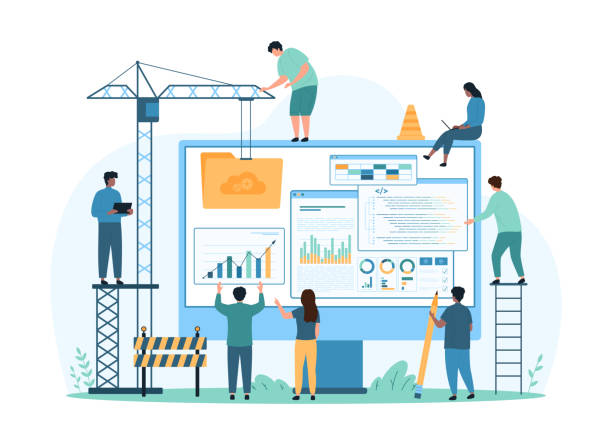
After e-commerce website design, the next stage focuses on customer acquisition and increasing sales.
This analytical and guidance section helps you implement effective marketing strategies.
There are various methods to promote your online store, including social media marketing (Instagram, Telegram, LinkedIn), email marketing, content marketing (blogging, videos), and paid advertising (Google Ads, Instagram Ads).
Each of these methods has different audiences and goals, and their smart combination can yield significant results.
Using discount campaigns, customer loyalty programs, and collaborations with influencers can also help increase brand awareness and attract new customers.
Monitoring and analyzing data from these campaigns is crucial for continuous optimization of marketing strategies.
This proactive approach in e-commerce website design ensures that your efforts to attract customers bear fruit.
The table below provides a summary of key marketing strategies:
| Strategy Type | Description | Key Benefits |
|---|---|---|
| Content Marketing | Producing useful and engaging content (blog, video, infographic) to attract audience and increase brand credibility. | SEO improvement, increased brand awareness, audience engagement. |
| Social Media Marketing | Activity on platforms like Instagram, Telegram, LinkedIn to interact with customers and promote products. | Increased engagement, reach a wide audience, building an online community. |
| Email Marketing | Sending newsletters, discounts, and special offers to customer email lists. | High conversion rate, targeted marketing, customer retention. |
| Paid Advertising (PPC) | Using platforms like Google Ads or Instagram Ads for quick display to target audience. | Instant access to target customers, measurable results, budget control. |
| Influencer Marketing | Collaborating with influential individuals on social media to introduce products. | Increased trust, access to a targeted community, increased sales. |
Continuous Maintenance and Updates for E-commerce Websites

E-commerce website design is only the beginning; its long-term success depends on continuous maintenance and updates.
This guidance and explanatory stage is of great importance.
Security, content, and technical updates are vital for maintaining your website’s optimal performance, security, and competitiveness.
Software and plugin security updates prevent hacker intrusions and potential vulnerabilities.
Additionally, your website content, including product descriptions, images, and blog articles, should be periodically reviewed and updated to maintain its freshness and appeal and provide accurate and complete information to customers.
Inventory management, order processing, and responding to customer inquiries should also be performed regularly.
Monitoring site performance, including loading speed and server response time, helps identify and resolve potential issues.
Active and comprehensive maintenance ensures that your online store is always in its best state and provides a positive user experience, ultimately leading to customer retention and increased sales.
Losing potential customers due to an unprofessional website? Rasawb is your answer! With our specialized corporate website design services:
✅ Elevate your business’s credibility and standing
✅ Experience attracting more targeted customers
⚡ Act now to get a free consultation!
Common Mistakes in Online Store Design and Management and Ways to Avoid Them
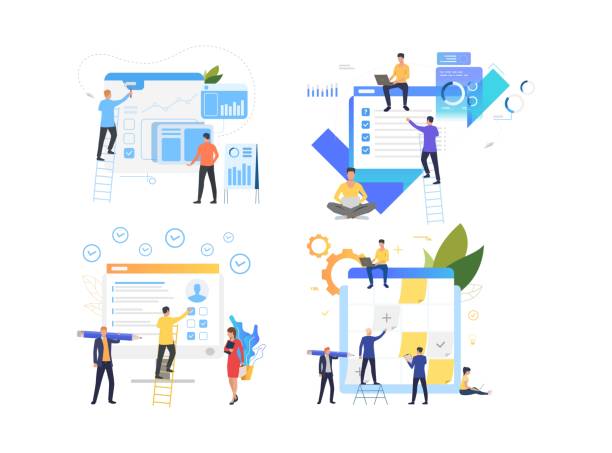
In the process of e-commerce website design and its operation, there are common mistakes that can hinder your success.
Identifying these mistakes and finding thought-provoking and analytical content for them is key to preventing financial losses and losing customers.
One of the biggest mistakes, is neglecting responsive design and mobile optimization.
Today, a large portion of internet traffic comes from mobile devices, and if your site is not displayed correctly on these devices, you will lose a significant portion of potential customers.
Slow website loading speed, low-quality product images, and insufficient or misleading descriptions are also among the issues that harm the user experience.
Lack of investment in SEO and digital marketing means your site will not be seen.
Poor customer support and lack of transparency in return policies can also damage your brand’s reputation.
To avoid these mistakes, always focus on the customer experience, listen to feedback, and use analytical tools for continuous improvement.
The Future of E-commerce and Upcoming Developments in E-commerce Website Design

The future of e-commerce is full of exciting developments that continuously change our approach to e-commerce website design.
This section of the article, which is news-oriented, analytical, and entertaining, explores future trends.
Technologies such as Artificial Intelligence (AI), Augmented Reality (AR), and Virtual Reality (VR) will play an increasing role in personalizing the shopping experience and enabling 3D product viewing.
Voice search and purchasing through voice assistants are also becoming widespread, and e-commerce website design should also be optimized for these types of interactions.
Furthermore, corporate sustainability and social responsibility have become important factors for consumers, so online stores should focus on ethical business practices and sustainable products.
The emergence of the metaverse and its integration with the online shopping experience can also open new horizons.
By being aware of these trends and investing in new technologies, you can prepare your online store for future success.
Frequently Asked Questions
| Question | Answer |
|---|---|
| What is e-commerce website design? | It is the process of creating an online platform for selling products or services, which includes user interface (UI) design, user experience (UX), and the necessary functionalities for online shopping. |
| What are the key features of a good e-commerce website? | Easy navigation, high loading speed, powerful search capability, efficient shopping cart, secure payment gateway, clear product display with quality images, user review display capability, and responsiveness (mobile compatibility). |
| What platforms are common for e-commerce website design? | Popular platforms include WooCommerce (on WordPress), Shopify, Magento, PrestaShop, and also custom content management systems. |
| What is the importance of an e-commerce website being responsive? | Given the increasing use of mobile for online shopping, website responsiveness (correct display on different screen sizes) is crucial for providing a good user experience and increasing conversion rates. |
| How long does the e-commerce website design process usually take? | The duration depends on the project’s complexity, number of products, required special features, and implementation method, and can vary from a few weeks to several months. |
And other services of Rasa Web Advertising Agency in the field of advertising
Smart Website Development: A combination of creativity and technology to increase click-through rates through Google Ads management.
Smart Sales Automation: An innovative platform to improve sales growth by optimizing key pages.
Smart Content Strategy: A combination of creativity and technology to analyze customer behavior using real data.
Smart SEO: A combination of creativity and technology for user interaction through customized user experience.
Smart Advertising Campaign: An innovative platform to improve customer acquisition with Google Ads management.
And over hundreds of other services in the field of internet advertising, advertising consultation, and organizational solutions
Internet Advertising | Advertising Strategy | Advertorial
Resources
Guide to Designing an Online Store in Iran
How to Build a Successful E-commerce Website?
The Importance of Professional E-commerce Website Design
SEO Tips for Iranian Online Stores
? Ready to transform your business in the digital world? Rasaweb Afarin Digital Marketing Agency, by offering comprehensive and innovative solutions, is with you on the path to success. For sustainable growth, from **website design with a modern user interface** to SEO strategies and targeted advertising campaigns, contact us.
📍 Tehran, Mirdamad Street, next to Bank Markazi, Kazeroon Janubi Alley, Ramin Alley, No. 6



